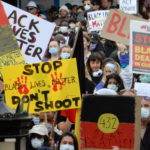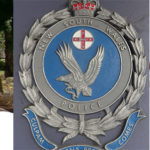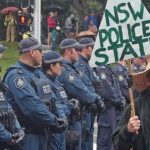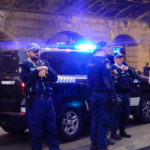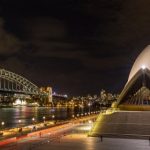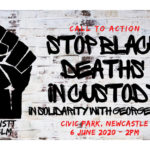NSW Police State Moves to Silence Protest Voices
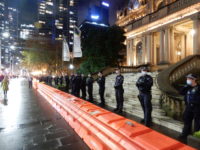
The scene was reminiscent of what one might expect to be depicted in a photo of Mussolini’s fascist Italy. However, the massive 600 police officer presence in the Sydney CBD last Friday night marked a new post-COVID lockdown show of excessive force.
A line of barricades cordoned off Sydney Town Hall from those still gathered for the scheduled Stop All Black Deaths in Custody rally. And behind the barriers was a line of officers streaming all the way down the public thoroughfare section of George Street – noticeably wearing masks for the first time.
Meanwhile, after the NSW Police Force had publicly announced it would be shutting the action down at Town Hall, up at Hyde Park, First Nations rally organisers had gathered with others in an area, where more police officers had also been deployed.
In this instance, officers representing the colonial era established NSW Police Force were surrounding the park’s statue of Captain Cook, as if Scott Morrison was giving the orders, rather than NSW police commissioner Mick Fuller, who obviously shares the same ideology as the PM.
While on Saturday afternoon, another extravagant use of taxpayer funds was on display, as officers covered the Town Hall area yet again: this time to fend off an already court-cancelled refugee demonstration that organisers managed to assemble elsewhere in the city.
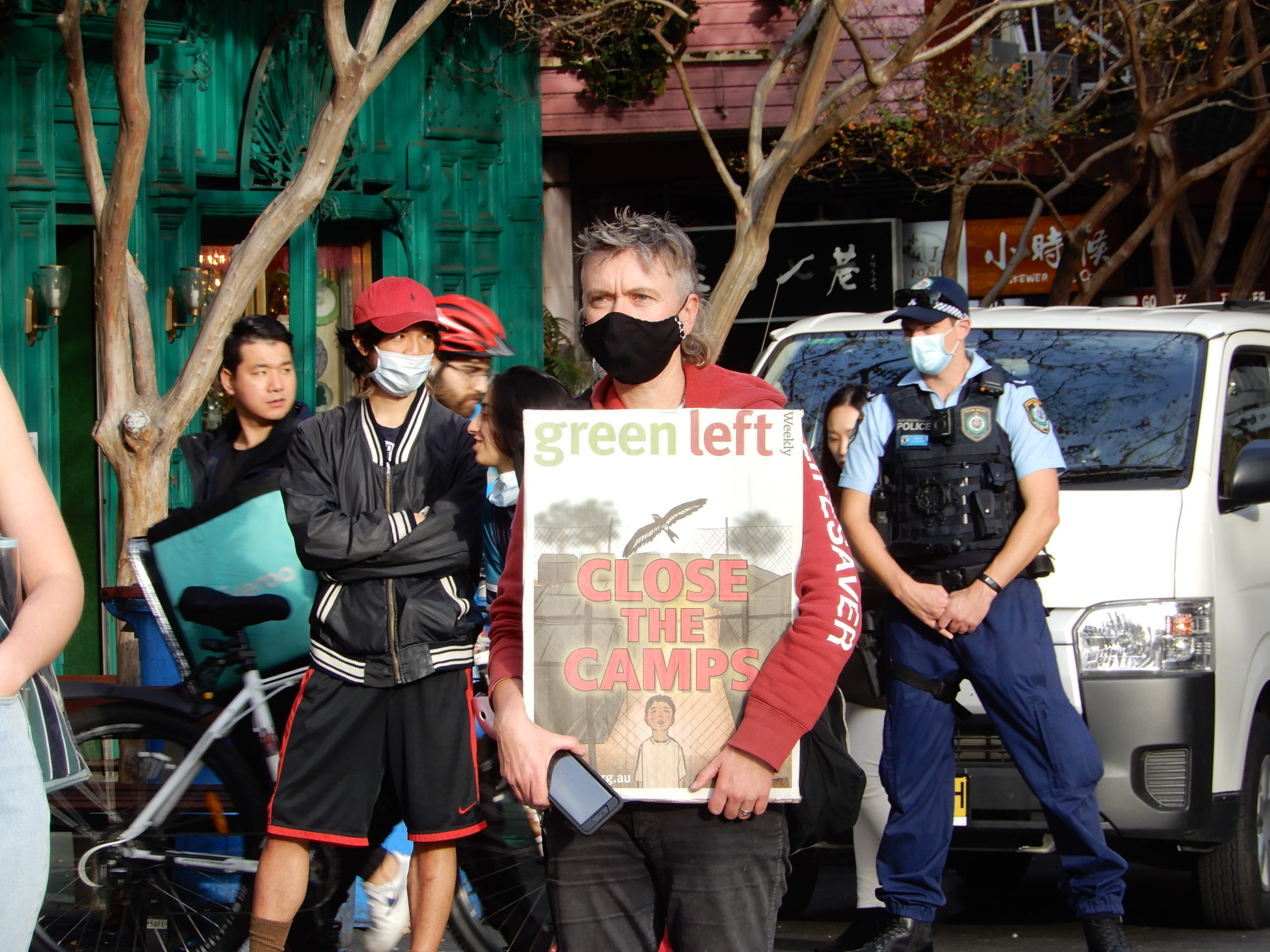
Black Lives Matter
“There was a huge police presence at Town Hall on Friday night, and a good showing of protesters,” explained Socialist Alliance member Rachel Evans. “The organisers made a decision to move to Hyde Park. Around 200 to 300 were there. They heard from speakers and were then told to move on.”
NSW Greens MLC David Shoebridge announced that he’d received “multiple confirmed reports” regarding NSW police testing its long range acoustic device, which can produce extremely loud sounds to disperse crowds at such a volume that permanent hearing damage can be caused.
“People were really staunch. They came out and we defied police,” Evans continued. “We followed the First Nations activists lead when they said to leave, because there were too many police officers. So, we dispersed.”
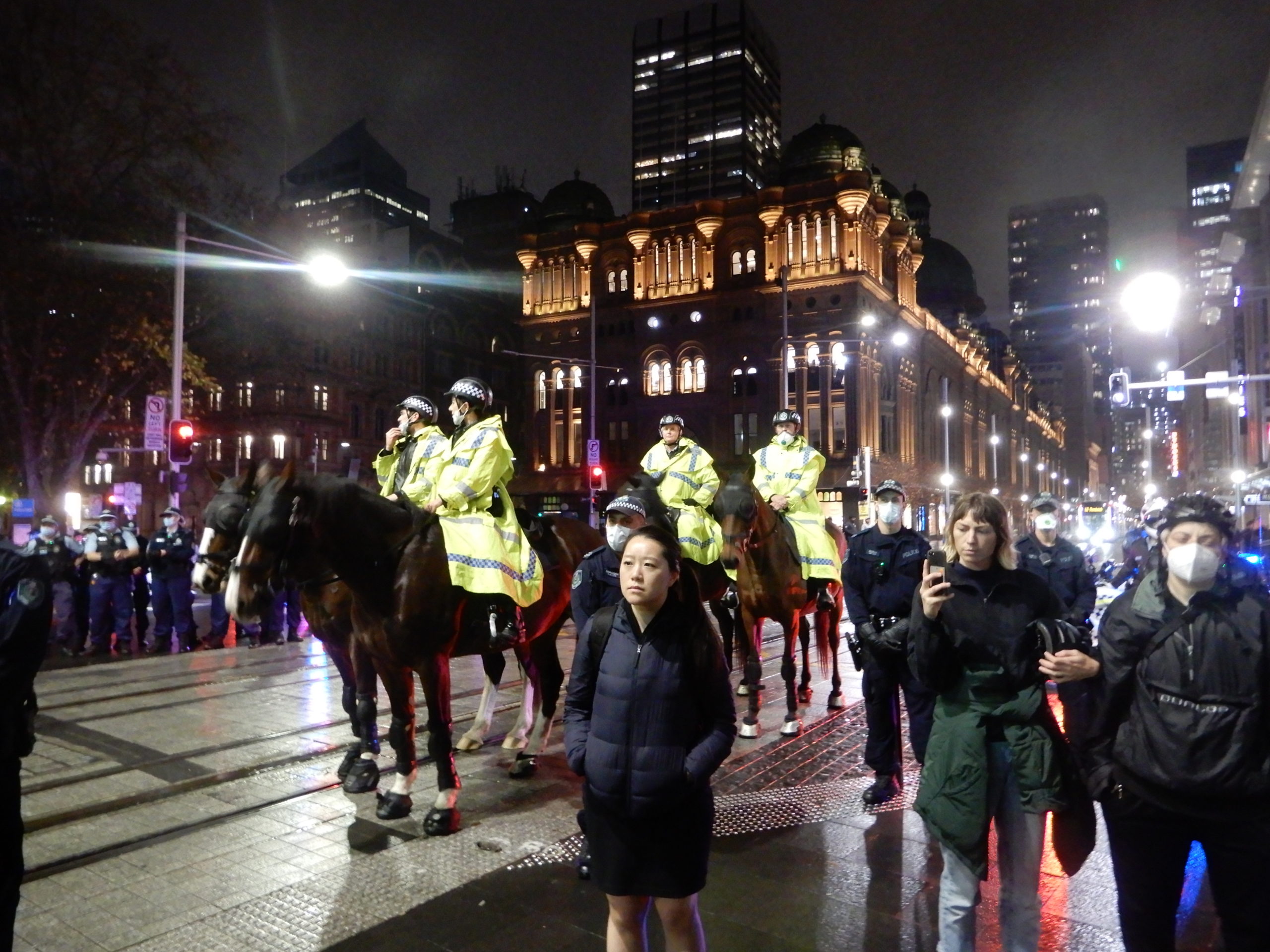
Around one hundred of the demonstrators then made their way down to Town Hall and commenced chanting, until a large group of NSW police officers began marching towards them warning that if they didn’t leave, they’d be arrested.
“They’re trying to spread fear in the population and get us to stop protesting,” Evans made clear. “It’s completely hypocritical, when they’re moving to open up the stadiums, cafes are full of people and schools don’t involve any physical distancing.”
Silencing dissent
This state’s COVID-19 lockdown restrictions started being lifted in mid-May. Right now, the updated main public health order bans outdoor gatherings of over 500 people. However, last Friday, the PM said that in coming weeks, stadiums will be reopened to allow up to 10,000 attendees.
So, as government moves to end the societal lockdown, activists are questioning its accompanying moves to prohibit protests. The already approved 6 June Sydney Black Lives Matter rally was ordered not to go ahead by the court at the behest of NSW police, only to gain a last minute reprieve.
The NSW police commissioner moved to ban the 6 June rally stating that the then 5,000 expected demonstrators was too large, despite organisers assuring that social distancing would be practiced.
The NSW Police Force then took the organisers of last Saturday’s already approved Free the Refugees rally to the NSW Supreme Court last week to get that event shut down. And Justice Michael Walton ruled that it should be prevented due to the continued threat of the coronavirus.
However, Saturday’s rally was never expected to have had more than 200 protesters attending. And those at Sydney Town Hall at 2 pm that afternoon were once again greeted by an unnecessarily large police presence.
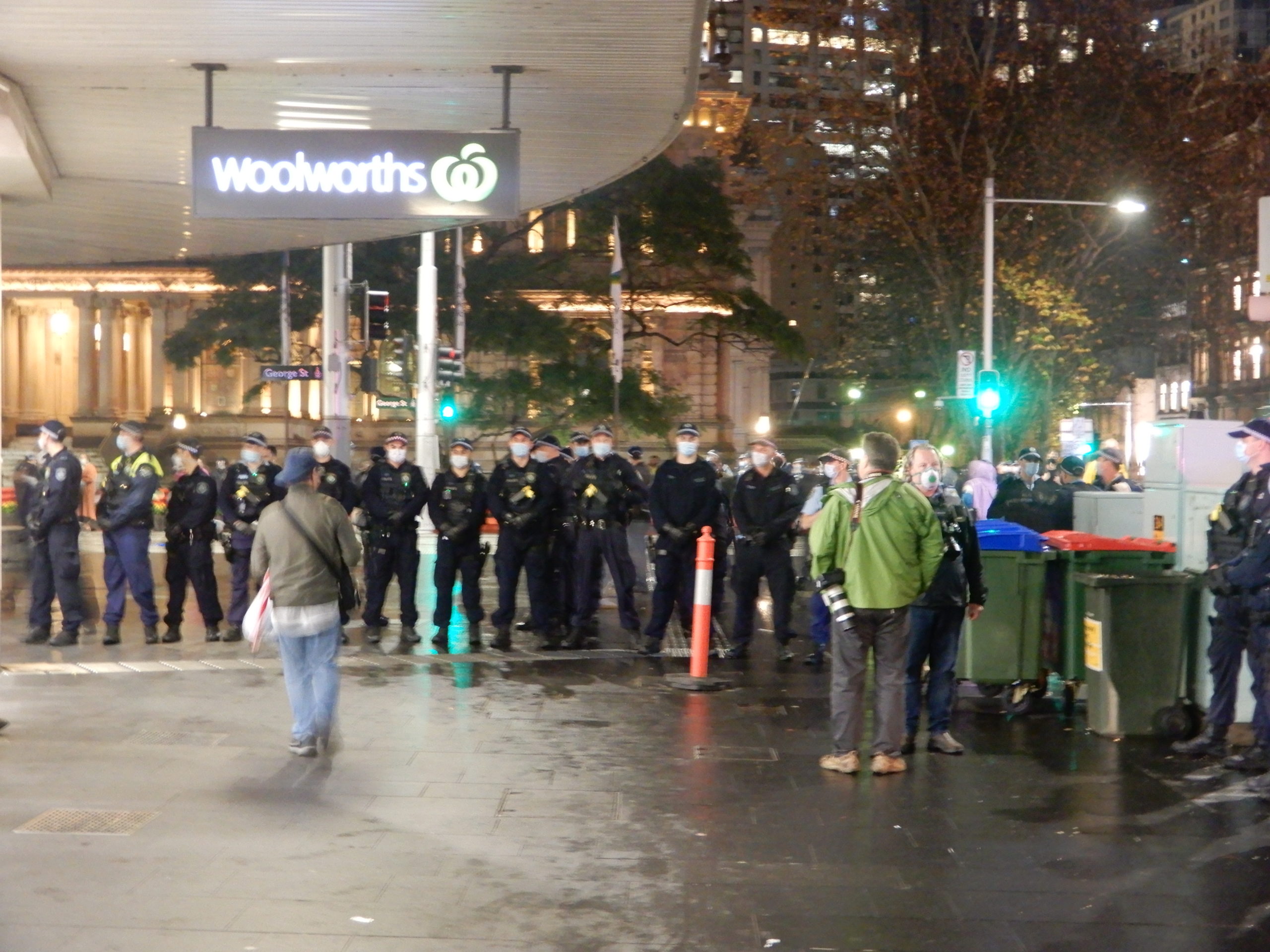
The show must go on
Organised by the Refugee Action Coalition (RAC) and Pride in Protest, Saturday’s rally took place regardless of the court order, with participants meeting at the top of Chinatown’s Dixon Street Mall to call for the release of immigration detainees, some of whom have now been held for seven years.
“There are hundreds of refugees imprisoned in detention and hotels. Those detainees are at risk of catching COVID-19,” said RAC spokesperson Dr Nicholas Riemer, over the megaphone in Chinatown. “And we have smoking gun evidence of the unsanitary practices that are happening there.”
“That is why the refugee movement is determined not to be silenced in making public the calls to free the refugees,” he continued. And he questioned how authorities could close down the protest on the grounds of public health, while simply neglecting to do anything to protect detainees.
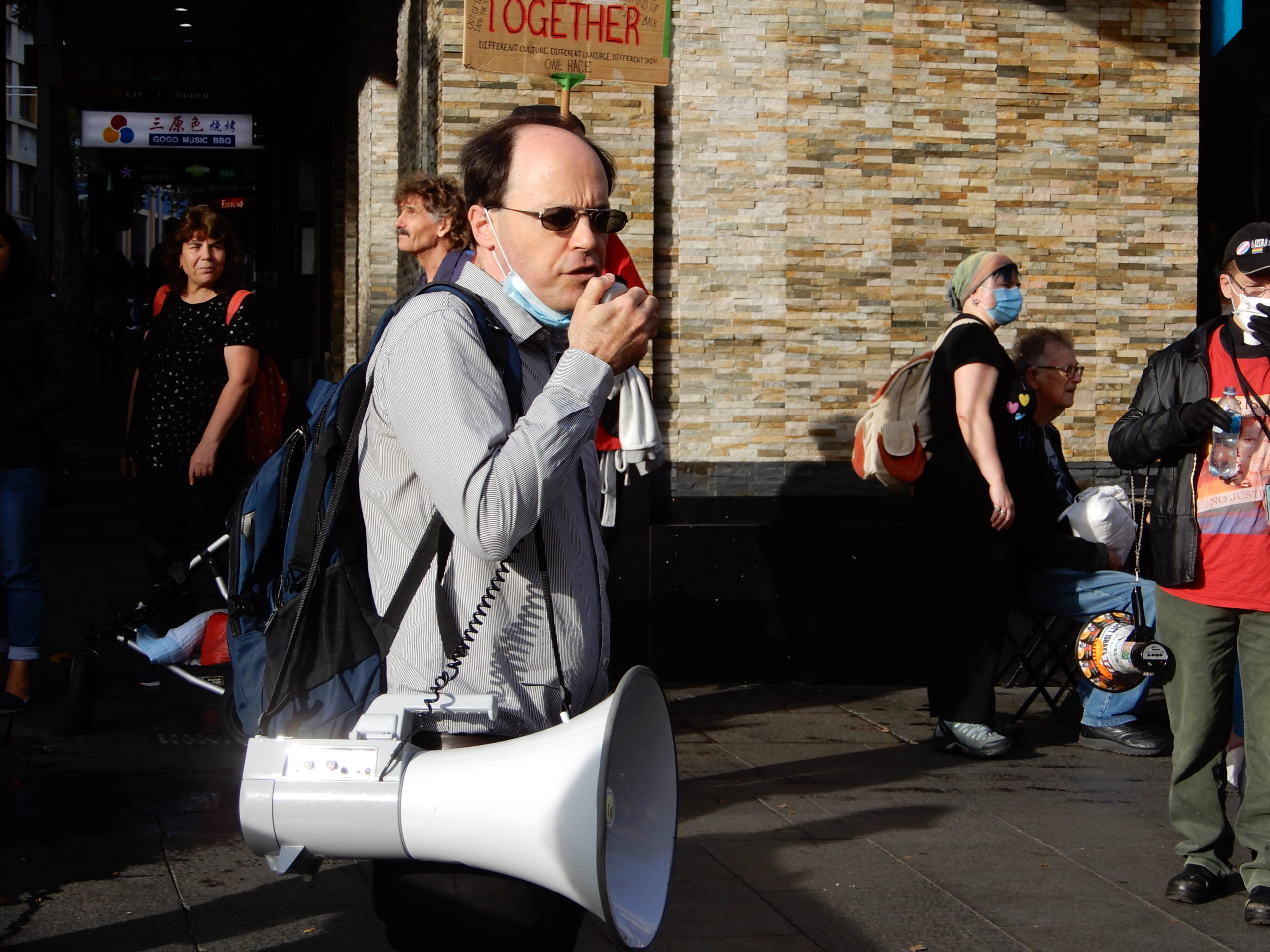
A group of around 50 protesters listened to speakers in the public mall, until enough NSW police officers arrived at the scene and felt confident to disperse the crowd under threat of arrest and fine for taking part in an illegal public assembly, as the officer in charge put it.
But, the mobilisers were not deterred. The group formed a procession and marched down through Haymarket and on into Belmore Park, before soon heading off towards the square outside the government offices on Lee Street in Chippendale.
And a group of NSW police officers literally tailed the march all the way.
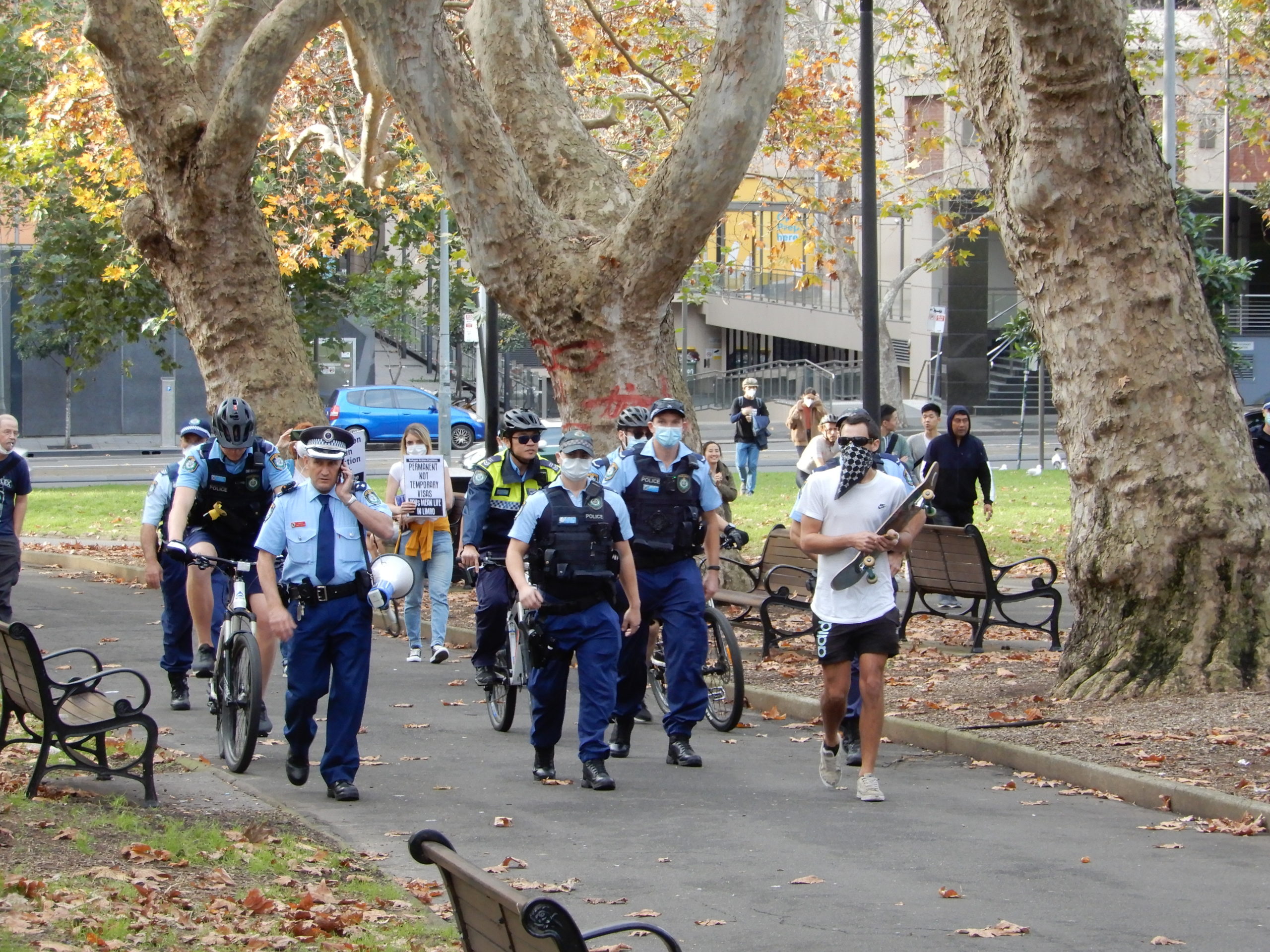
A force of oppression
“The call for justice for refugees and other exploited minorities will not be silenced and cannot be silenced,” Dr Reimer told Sydney Criminal Lawyers. “The police force, the Supreme Court and parliament are all very regularly on the wrong side of these issues.”
Reimer asserts that while current moves to suppress protests are based upon supposed fears around public health, he points to a similar refugee action authorities moved to prevent marching through Pitt Street Mall last July, which reveals that the pandemic is simply being used as a helpful excuse to silence dissent.
“It’s very clear whose side the police are on. The police are on the side of white supremacy, the prison guards and the guards at Villawood,” the academic concluded.
“They’re forces of oppression. They’re not interested in justice or human rights. And if they were, we’d have a very different kind of society.”


